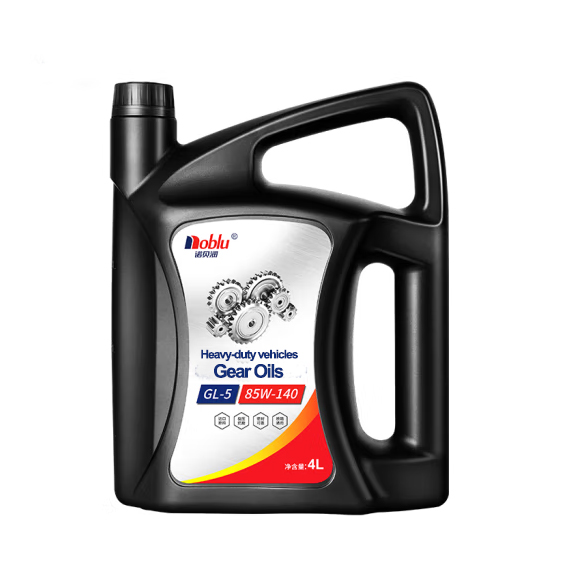Keeping the lubricants in your commercial vehicles in top shape is essential for smooth operation and extending engine life. While there isn’t a one-size-fits-all answer to how often you should replace the oil, several factors can help you determine the best maintenance schedule. Whether you’re using زيت تشحيم صناعي, زيت تشحيم السيارات, or زيت ضاغط الهواء, establishing the right replacement cycle can improve engine efficiency and reduce downtime.
1. Main Factors Influencing Lubricant Replacement
1.1 Oil Quality
The type and quality of lubricant you use play a big role in how often it needs to be replaced. Different oils break down at different rates, depending on their formulation:
- Mineral Lubricants: These oils are basic and typically need to be replaced every 5,000 kilometers أو 6 أشهر. They break down faster than synthetic oils, so they require more frequent changes.
- Semi-Synthetic Lubricants: A mix of mineral oil and synthetic additives, these are more durable and are often replaced around 7,500 kilometers أو 9 months.
- Fully Synthetic Lubricants: Offering the best performance, these oils can last up to 10,000 kilometers أو 1 year before needing a change.
As a شركة زيوت التشحيم specializing in high-quality products, تشونجتيان للبتروكيماويات offers زيت تشحيم صناعي و زيت تشحيم السيارات designed to extend oil change intervals and improve engine performance.
1.2 Driving Conditions
The driving environment greatly affects how often oil needs to be replaced. Vehicles operating under harsh conditions—like frequent stop-and-go driving, heavy traffic, extreme weather, or off-road conditions—will need oil changes more often. زيت ضاغط الهواء, for example, can degrade quickly under extreme pressure and temperature.
1.3 Engine Condition
The health of the engine also impacts oil replacement cycles. Here’s how:
- Carbonization: Engines that develop carbon deposits break down oil faster. These engines may need more frequent oil changes to avoid damage.
- High-mileage Engines: Older engines often burn oil more quickly, requiring more frequent replacements to ensure proper lubrication.
Using top-tier lubricants, like زيت تشحيم السيارات from تشونجتيان للبتروكيماويات, can help reduce carbon buildup and maintain engine efficiency for longer.
1.4 Oil Filter Maintenance
A clean oil filter is essential for maintaining the quality of your engine oil. A clogged or damaged filter can cause oil contamination, leading to quicker degradation. Regular oil filter inspections and replacements are necessary to ensure your lubricants, such as زيت ضاغط الهواء, perform effectively.

2. Special Cases for Lubricant Replacement
2.1 Long Oil Change Technologies
Modern commercial vehicles with advanced technologies can extend oil change intervals. Some vehicles can go as far as 100,000 kilometers without needing an oil change, thanks to premium lubricants and advanced engine design. Vehicles using long oil change technologies typically rely on high-quality oils like زيت تشحيم صناعي.
2.2 Stationary Vehicles
If a vehicle is idle for more than 2 months, moisture can accumulate, causing the oil to emulsify. In this case, replacing the oil before use is crucial to prevent engine damage. This is especially important for oils like زيت ضاغط الهواء, which are sensitive to moisture and can degrade quickly when the vehicle is inactive.
3. Recommended Lubricant Replacement Cycle for Commercial Vehicles
Here’s a general guide to oil change intervals based on oil type:
3.1 General Recommendations
- Mineral Lubricants: Replace every 5,000 kilometers أو 6 أشهر.
- Semi-Synthetic Lubricants: Replace every 7,500 kilometers أو 9 months.
- Fully Synthetic Lubricants: Replace every 10,000 kilometers أو 1 year.
These are guidelines. Harsh driving conditions or other factors may require more frequent oil changes.
3.2 Harsh Driving Conditions
For vehicles operating under tough conditions, like frequent stop-and-go traffic or off-roading, consider shortening oil change intervals by 10-20%. For example:
- Mineral Oils: Change every 4,500-6,000 kilometers.
- Semi-Synthetic Oils: Change every 6,500-7,000 kilometers.
3.3 Monitoring Oil Condition
Keep an eye on your oil’s condition to ensure it’s still doing its job. Key signs it’s time for an oil change include:
- Color Changes: Dark oil indicates contamination or carbon buildup.
- Odor: A burnt smell means the oil has degraded.
- Viscosity: If the oil feels thinner than usual, it’s lost its ability to protect the engine.
If you notice any of these signs, it’s time to replace the oil and prevent engine damage.
4. Zhongtian Petrochemical: Your Trusted Source for High-Quality Lubricants
As a leading oil company in China, تشونجتيان للبتروكيماويات is committed to providing premium oils, like زيت تشحيم صناعي و زيت تشحيم السيارات, designed to keep your fleet running smoothly. Our oils:
- Reduce friction and wear on engine components.
- Extend the life of critical engine parts.
- Improve fuel efficiency and reduce maintenance costs.
By choosing Zhongtian Petrochemical’s lubricants, businesses can improve their fleet’s performance, reduce downtime, and keep engines in top condition for longer periods.
5. الخاتمة
The frequency of lubricant replacement in commercial vehicles depends on oil quality, driving conditions, engine health, and oil filter maintenance. By regularly monitoring oil condition and adjusting your oil change intervals, you can ensure your engine runs efficiently. Choose Zhongtian Petrochemical’s high-quality lubricants, including زيت تشحيم صناعي و زيت تشحيم السيارات, to reduce maintenance costs and maximize fleet performance.


































